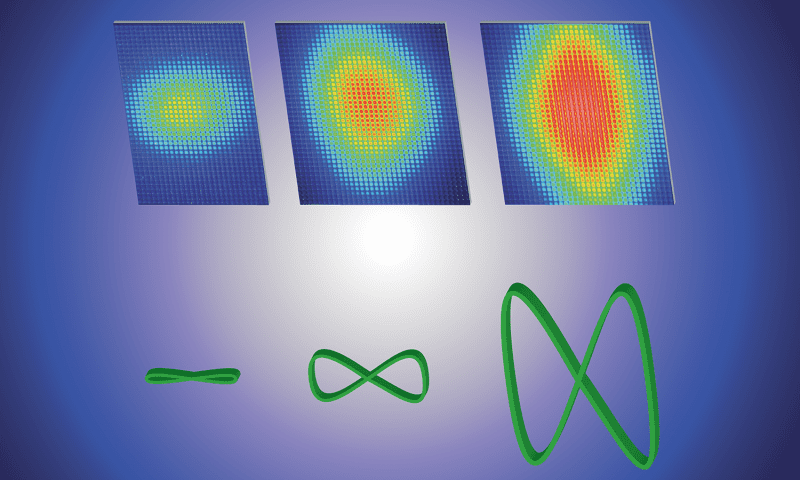Evolutionary congruence (losers) vs ecological adaptation (winners)
Kalevi Kull: Censorship & Royal Society Evo Event
Nobody wants to belong to the party of losers. One of the best strategies in such a case is evidently an interpretation of the change as a gradual accumulation of knowledge while their work has always been at the cutting edge.
In a rapidly changing world of post-censorship, the losers tout “DNA-sequence based phylogeographic assessment.” All serious scientists have linked energy-dependent RNA-mediated protein folding chemistry from changes in angstroms to ecosystems via supercoiled DNA, which protects all organized genomes from the virus-driven degradation of messenger RNA.
Each time you see a term like evolutionary congruence, ask for a definition that links it to what is currently known to all serious scientists about biophysically constrained energy-dependent RNA-mediated biologically based cause and effect.
You will learn There is no such thing as an evolutionary congruence. Molecular Phylogeography is not examined (e.g., by serious scientists) outside the context of the anti-entropic virucidal energy of the sun.
The virucidal energy links the creation of microRNAs in plants to the food energy-dependent creation of microRNAs in animals and all biophysically constrained biologically-based cause and effect on Earth via the physiology of pheromone-controlled reproduction in bacteria.
See: The phylogenetic utility and functional constraint of microRNA flanking sequences
See also: Cystosis
A board game taking place inside a human cell! Players compete to build enzymes, hormones and receptors and fend off attacking Viruses!
Food energy links the de novo creation of microRNA flanking sequences to the creation of enzymes, hormones and receptors that link ecological variation to ecological adaptation via the physiology of pheromone-controlled reproduction in species from microbes to humans. The pheromone-controlled physiology of reproduction biophysically constrains the transgenerational epigenetic inheritance of virus-driven energy theft, which has been linked from mutations to all pathology –except by Greg Bear, who linked biophysically constrained viral latency to the pheromone-controlled creation of a new human subspecies.
See: The Darwin Code by Greg Bear
Bacteriophages–phages for short–can either kill large numbers of host bacteria, reproducing rapidly, or lie dormant in the bacterial chromosome until the time is right for expression and release. Lytic phages almost invariably kill their hosts. But these latter types–known as lysogenic phages–can actually transport useful genes between hosts, and not just randomly, but in a targeted fashion.
See for comparison: A Crack in Creation review – Jennifer Doudna, Crispr and a great scientific breakthrough
Jennifer Doudna’s work began with organisms even further out on the Palin scale: bacteriophages, tiny viruses that prey on bacteria.
Conclusion: The difference between the works of science fiction novelist Greg Bear, and people like Jennifer Doudna, is clear. Greg Bear’s works (and the works of the late Eshel Ben-Jacob) predicted that, if viral latency was not biophysically constrained, the virus-driven degradation of messenger RNA would be linked to all pathology.
The works of biologically uninformed researchers tout the benefits of the virus-driven degradation of messenger RNA, which is used in their gene-editing technology, as if the concept of gene-editing exemplified a “Crack in Creation.” For comparison, natural selection for energy-dependent codon optimality links the pheromone-controlled physiology of reproduction from energy-dependent changes in chirality to autophagy, which protects all organized genomes from the virus-driven degradation of messenger RNA that Doudna and others have linked to all pathology.
See also: Codon identity regulates mRNA stability and translation efficiency during the maternal-to-zygotic transition
The bias between codons or amino acids, and mRNA expression levels has been previously recognized across species and is thought to result from selection for efficient, accurate translation, and folding of highly expressed genes (Ikemura,
1982; Akashi, 1994; Akashi & Gojobori, 2002; Drummond & Wilke, 2008; Kudla et al, 2009; Novoa & Ribas de Pouplana, 2012). The amino acid optimality code (Fig 6) provides an alternative perspective on sequence changes between paralogs in evolution and human disease.
See also:
The Origin of Information (3) If they do not know where the quantized energy in a hydrogen atom came from, they cannot discuss a Crack in Creation in the context of the virus-driven degradation of messenger RNA that is their key to gene editing.
See also: NgAgo Paper Retracted
[W]hen it comes to biology, answers are often not definitive. And when it comes to replication studies, the one thing we know is that it takes time,” it says. “In the case of NgAgo, the time has come and the data have spoken.
Next we will learn that “Nothing in Biology Makes Sense…” outside the context of food energy-dependent pheromone-controlled RNA-mediated ecological adaptations.


